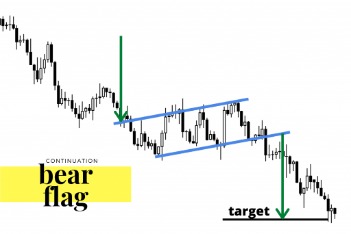Doji Overview, Types, How It is Used, and Drawbacks
- April 24, 2023
- Uncategorized
- Posted by Antoine Watson
- Comments Off on Doji Overview, Types, How It is Used, and Drawbacks

Before acting on any signals, including the Doji candlestick chart pattern, one should always consider other patterns and indicators. A long-legged doji occurs when the open and close are nearly the same price, but there are extreme highs and lows during the period, creating long tails. A long-legged doji pattern indicates indecision because neither the bulls nor bears make any real progress, despite strong moves both up and down during the period.

Lawrence has served as an expert witness in a number of high profile trials in US Federal and international courts. CFDs are complex instruments and come with a high risk of losing money rapidly due to leverage. Between 74%-89% of retail investor accounts lose money when trading CFDs.
A Doji candlestick can take the form of a plus sign, a cross, or an inverted cross. As part of technical analysis for traders, it is important to understand and identify trends on trading charts for currencies, stocks, futures, or bonds. In addition to understanding and identifying trends, traders need to know different chart patterns and what they mean.
Would you prefer to work with a financial professional remotely or in-person?
If this price is close to the low it is known as a “gravestone,” close to the high a “dragonfly”, and toward the middle a “long-legged” doji. The name doji comes from the Japanese word meaning “the same thing” since both the open and close are the same. A chart depicting a doji suggests that no clear direction has been established for this security – it is a sign of indecision, or uncertainty in future prices. The harami pattern is another signal in the market that is used in conjunction with the doji to identify a bullish or bearish turn away from indecision. In the subsequent candles after the Doji had formed, we see buyers entering the market and taking the prices higher, and reversing the trend direction. Thanks to advancements in trading technologies, traders have various ways to study these charts to understand price action and locate patterns.
Doji Dragonfly Candlestick: What It Is, What It Means, Examples – Investopedia
Doji Dragonfly Candlestick: What It Is, What It Means, Examples.
Posted: Sat, 25 Mar 2017 22:33:34 GMT [source]
A Doji candlestick can look like a cross or a plus sign, with a small or non-existent body. A Doji can represent indecision in the market, with https://g-markets.net/ both sellers and buyers in doubt. The versatility of this candlestick pattern is appreciated by all types of traders for different time frames.
Importance of Confirmation Following a Doji
A Doji candle’s wicks are either exceedingly little or nonexistent. This pattern might appear at the bottom of a downturn or the top of an upswing. It’s common to see the Four-Price Doji in markets where trading volume and liquidity is extremely low. In a strong trend or healthy trend, the market is likely to “bounce off” the Moving Average. Because the market is telling you it has rejected higher prices and it could reverse lower. Thus, you’ll look to go long when the price does a pullback towards a key Moving Average and forms a Dragonfly Doji.
- After the open, bulls push prices higher only for prices to be rejected and pushed lower by the bears.
- In the highly liquid forex market, such patterns are extremely rare, but this often occurs in the stock market.
- The Natural Gas price chart below shows a gravestone Doji as the asset’s price continues to decrease in a downtrend.
- Neutral Doji generally forms when the buying and selling powers for a stock in the market are at an equilibrium.
A doji is a pattern that occurs in a session of trading where the opening and closing price of an asset are almost equal. They are often interpreted as components of larger patterns and do not occur very often under normal circumstances. The word ‘doji’ itself means ‘blunder’ or ‘mistake’ in Japanese due to the scarcity of instances where the open and close prices are almost exactly the same.
Shares or Mutual Funds – Which one is better for Investment?
This candlestick pattern signals a higher degree of indecision as prices swung considerably high and low within the period, but ended nearly unchanged. This pattern tends to form at the peak of an upward trend and signals that the market may change its direction. The dragonfly Doji also suggests a high level of indecision from both sellers and buyers.
A long-legged Doji shows that the price of a traded asset closes in the centre of the day’s high and low. This Doji type, which looks like a cross, shows significant indecision among buyers and sellers in the market. The Doji candlestick pattern is a formation that occurs when a market’s open price and close price are almost exactly the same. A bearish gravestone doji is typically the most common type of pattern and may occur near market tops. The below price chart for Natural Gas shows a gravestone doji in a downtrend, as the asset’s price is constantly declining. There is a pullback to the upside, followed by a gravestone that marks the end of the pullback higher.
- The harami pattern is another signal in the market that is used in conjunction with the doji to identify a bullish or bearish turn away from indecision.
- And, in this situation, both upward and downward movement is possible.
- Traders would also take a look at other technical indicators to confirm a potential breakdown, such as the relative strength index (RSI) or the moving average convergence/divergence (MACD).
- Nevertheless, it confirms the likelihood of further migration in the other direction.
- There is no assurance that the price will continue in the expected direction following the confirmation candle.
Traders should consider using stop-loss orders to limit potential losses if the market does not follow the anticipated reversal. Additionally, implementing proper risk-reward ratios can help maintain a balanced approach and protect against significant losses. When a Doji forms on your chart, pay special attention to the preceding candlesticks. This is a very bullish candle as it shows that buyers were in control of the entire session.
What is a dragonfly doji candle?
However, we consider a candle as a doji if the difference between opening and closing prices is a few cents or points. A small positive or negative price movement in a session does not impact the whole market. Or in other words, a doji is a candlestick in which the opening and closing prices are the same or almost the same. Spread bets and CFDs are complex instruments and come with a high risk of losing money rapidly due to leverage.
Doji is a candlestick pattern is when the candle has the same open and closing price. Don’t make these mistakes when you trading the Doji candlestick pattern. The Morning star pattern happens when the prices are in a downtrend, the pattern consists of 3 candles a down candle, Doji, and an up candle. In the picture, L prices continue to fall and sellers were in control until the Doji forms, the next candle turns bullish. The completion of this candle happens if the up candle closes more than half the size of the down candle.
When trading based on Doji signals, it’s important to use stop-loss orders and risk-reward ratios to manage potential losses. While a Doji can signal a potential reversal, it’s essential to await confirmation in subsequent periods before making a trading decision. Conversely, a Doji appearing in a downtrend could signal that selling pressure is decreasing, hinting at a possible bullish reversal. The Doji’s location within a price trend can enhance its significance.
In the new release the price gets up and down you can see long-legged Doji can be difficult to trade because the range of the candle is worse. The candle has a upper wick with the same open and close, this means there is a rejection of higher prices. Open and close at the same level when the market types of doji opens, buyers get control and it rises and becomes up and gain come down to close it is bearish. A long-legged Doji forms when the buying and selling powers for a stock in the market are at an equilibrium. This Doji type shows a great amount of indecision among buyers and sellers in the market.
Triple Top Pattern: How to Trade and Examples
If the price is moving sideways overall, or consolidating, the long-legged doji may confirm that the traders still are not sure which way to go. Candlestick traders rely on this data to make decisions and devise trading plans. To determine what each kind of Doji means, we may look at the highs and lows of the trend and the Doji’s position inside it. In the next section, you’ll another type of Doji that signals the market is about to bottom out.
What is Doji candle pattern in crypto and how to trade with it? – CoinGape
What is Doji candle pattern in crypto and how to trade with it?.
Posted: Wed, 15 Feb 2023 16:31:59 GMT [source]
71% of retail investor accounts lose money when spread betting and/or trading CFDs with this provider. You should consider whether you understand how spread bets and CFDs work and whether you can afford to take the high risk of losing your money. But, if you take it into context with the earlier price action, you’ll have a sense of what the market is likely to do with the doji pattern.
Doji Candlestick Patterns
The pattern normally forms at the bottom or end of a downward trend. It means that the price of the financial asset closes in the middle of the day’s high and low. Following the trend prior to the Doji, a change in direction can be expected. In technical analysis, a Doji is an indication of a possible primary trend reversal during a time when there are high trading volumes in a particular direction. The size of the doji’s tail or wick coupled with the size of the confirmation candle can sometimes mean the entry point for a trade is a long way from the stop-loss location. The Long-Legged Doji simply has a greater extension of the vertical lines above and below the horizontal line.

